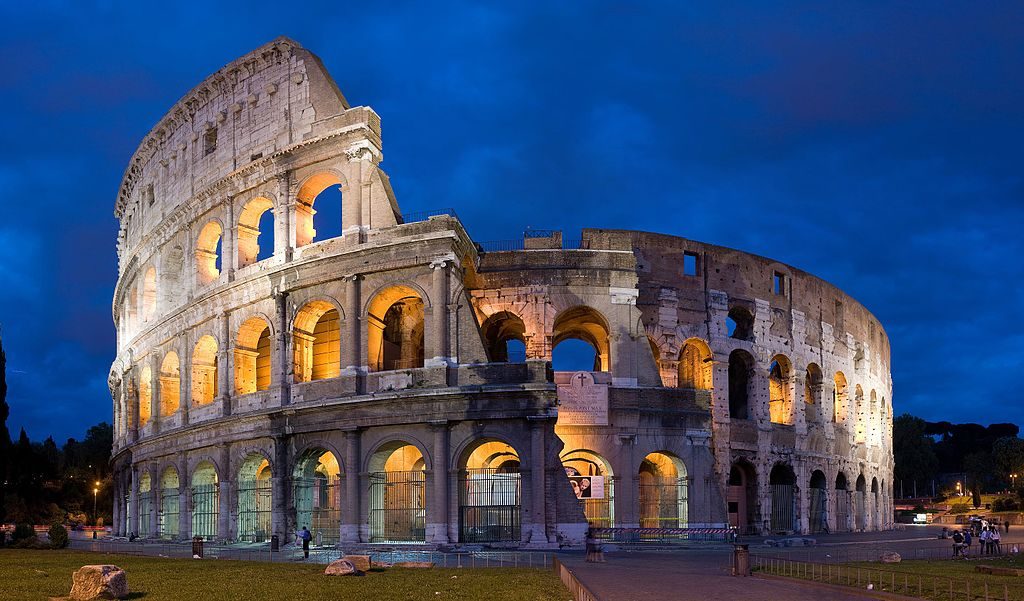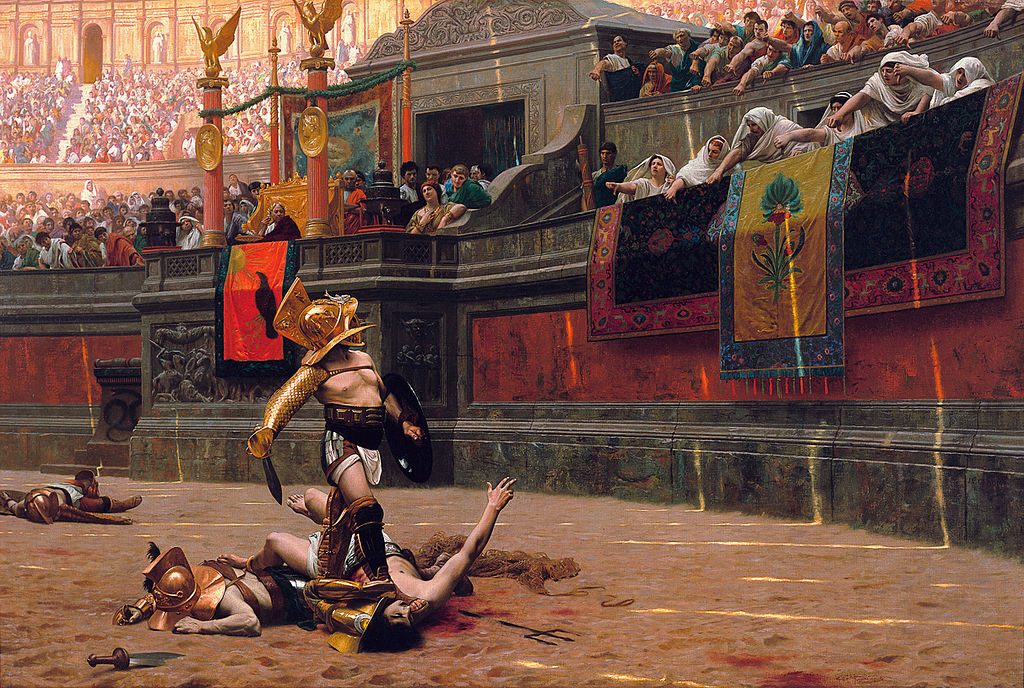
PHOTO: wikimedia
When we think of entertainment today, we usually think of going to the movies or going to a football game. Hundreds of thousands of people gather together to watch a bunch of athletes fight over a ball. We sip on soda, chow through hot dogs and slices of cheap pizza, and cheer over the victories of our favorite teams and cry when they lose.
Well, the human race hasn’t changed all that much. Back in the Roman times, they had their own version of football. They, too, chowed down on snacks and gathered to cheer on their favorite teams. Except, the games ended with bodies being dragged out of the amphitheater.
Colosseums were popular throughout the Roman Empire, but none could compare to the famous Great Colosseum of Rome. It was a massive feat of engineering, able to seat 80,000 spectators at any given time. Today, we’ll be taking a look inside the inner workings of the largest monument to blood sport ever built.
Building a Legend

PHOTO: wikimedia
The Colosseum was constructed in the heart of Rome, funded by the spoils of war taken from looting the Jewish Temple after the Great Jewish Revolt in 70 AD. After the great victory, Emperor Vespasian ordered a new amphitheater to be built from the spoils.
It was a huge project, involving a huge workforce consisting of slave labor, many of whom were Jews taken from Jerusalem. Teams of Roman engineers, artists, painters, and interior designers were called in to work on the Colosseum, too. It took nearly eleven years to finish, with more remodels added by Domitian, Vespasian’s younger son.
The Roman engineers who designed the building thought of everything. The top of the Colosseum was rimmed with an awning to keep out the sun and rain, and they made sure to make it possible to fill and evacuate the building easily, even with the large droves of people that would occupy it. They built eighty ground-level entrances, each numbered. The north entrance was reserved specifically for the Emperor. Three others were for the elite ruling classes of Rome.
Seating
The seating was highly organized. Each seat had a designation by section, row, and number. Each section was for a different social class, as follows:
- Podium – the ground level, best seats. Reserved for senators.
- Maenianum Primum – the next level up. This was reserved for non-senatorial noblemen, or knights.
- Maenianum Secundum – This was the next level up, reserved for ordinary Roman citizens, the middle class.
- Summum – the upper part of the theater. This was for the poor citizens of Rome.
- Maenianum Secudum in Legneis – The nosebleed seats. This was for the poorest people, women, and slaves.
Arena and Hypogeum
The Arena was the largest in Rome, covering 42,000 square feet. The floor was made out of planks of wood, covered with sand. In fact, the we get the word “arena” from the Roman word for sand, which is literally arena, or harena.
![The hypogeum today. [PHOTO: wikimedia]](https://historythings.com/wp-content/uploads/2016/09/1024px-Colloseum-hypogeum-detail-300x203.jpg)
The hypogeum today. [PHOTO: wikimedia]
The tunnels run on for miles, connecting to various stables that housed the wild animals to be used in the fights, as well as to the gladiator’s barracks. Other tunnels were built to allow the Emperor himself access without having to wade through the crowds of people.
Let the Games Begin

PHOTO: wikimedia
In the years following its construction, the Colosseum would host events and battles on a, well, colossal scale. In AD 81, Titus kicked off the games with a bang. The inaugural games in the Great Colosseum were said by Dio Cassius to have involved the killing of almost 10,000 wild animals in one day.
Spectators flocked to the Colosseum to watch gladiators fight to the death and people be torn apart by wild animals. They were given “tickets” in the form of pottery shards with numbers on them, which would direct them to their seat.
Before the Hypogeum was built, several writers recount that whole naval battles were hosted in the Colosseum. It would be filled with water, and spectators would gather to watch the different ships duke it out. After the Hypogeum was constructed, it was impossible to flood the building without ruining the tunnels beneath.
The Colosseum hosted various shows that went beyond gladiator fights, shows that were often either military demonstrations, religious shows, or demonstrations of some family’s power or prestige. These were usually funded by individuals and were a great favorite of the crowds.
Animal hunts were another great favorite. Thousands of people gathered to watch gladiators hunt exotic African beasts, including rhinoceros, hippopotamuses, elephants, giraffes, lions, panthers, leopards, bears, tigers, crocodiles, and ostriches. After one victory in Dacia in AD 107, Emperor Trajan celebrated by hosting a 123-day-long set of games involving 11,000 animals and 10,000 gladiators.
Whole battles were staged, in fact, featuring hundreds of thousands of gladiators that would fight to the death, usually simulating real-life historical battles. These would be set with backdrops to give the audience a feel for what the real battlefield was like. Magicians and acrobats would give performances, and, sometimes, the arena would simply be set up with painted sets and filled with animals, like a museum, to give the Roman citizens a taste of what a different environment looked like. Sometimes, these elaborate sets would even be used to depict stories from mythology in episodes, like we might watch a television show today.
Today, the Colosseum is simply a tourist attraction, but humans have never lost their love of battle and bloodlust. Indirectly, we flock to watch much less gruesome sports in our own amphitheaters, and from the safety of our living rooms, we watch battle scenes, historical or fantastical, depicted on our TVs, often with all the pomp and elaborate set up that those ancient games had, and more. Some things never change.

